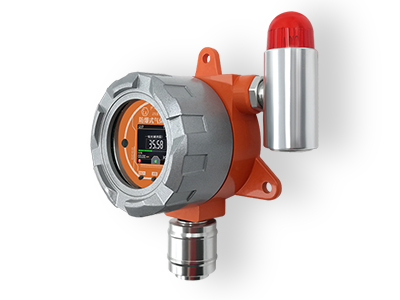Methane (CH4), the main component of natural gas, is an odorless, colorless gas that is highly flammable or flammable at a low explosive limit (LEL) concentration of 100%. Its properties make it hard to detect. For many people working in natural gas, CH4 gas detectors are essential to maintaining a safe working environment.
Current CH4 detection methods, including catalytic bead sensors and NDIR sensors, have been used for decades. There has been little change in the technology until recently. Unfortunately, these types of sensors have limitations when it comes to detecting methane and other gases.
Catalytic sensors do not work in zero- or low-oxygen environments. They can also become poisoned when exposed to high concentrations of flammable and combustible gases. Once poisoned, the sensor appears to be operational, which can put workers in extremely hazardous situations. Non-dispersive infrared detectors typically use excessive amounts of power, need frequent calibration, and are costly. Neither option is an ideal CH4 gas detector.

Optimized CH4 gas detector
Advanced electronics in JXCT's CH4 gas sensor measure changes in the thermal properties of the surrounding air and body. Find environmental data on the output reading to determine the presence and concentration of CH4.
Reliability in all environmental conditions: Catalytic and NDIR gas sensors may become unreliable when environmental conditions change extreme or rapidly. These changes in temperature, pressure and humidity can lead to inaccurate readings. The CH4 gas sensor can reliably detect the presence of natural gas in a variety of environmental conditions. The sensor will provide accurate readings in the temperature range from -40℃ to 75℃ and relative humidity between 0% and 100%.
The future of CH4 gas detectors
JXCT combustible gas sensor brings new progress for the safety of dangerous gas and combustible gas due to its characteristics. These sensors can be used in a variety of atmospheric conditions, including when mixed gases are present or oxygen levels are low.
JXCT's combustible gas sensor provides a reliable and durable sensor with temperature and pressure compensation capabilities. The sensor will work in a wider range of conditions than other current sensors. They are helping to keep more CH4 out of the atmosphere and ensure the safety of workplaces in the oil and gas industry.
The sensors also protect companies from losing profits due to gas leaks. CH4 gas detectors can potentially prevent accidents or injuries related to CH4 leaks. Such accidents are costly in terms of workers' claims, legal fees and settlements.
In the past few decades, the natural gas industry has achieved tremendous development. If that growth continues, the CH4 leak will pose even greater challenges. Methane is very dangerous in high concentrations or when it ignites.
When choosing CH4 gas detectors, the company couldn't let up. You must have the best technology available to protect your business and employees.
 : +86 155 8830 2704
: +86 155 8830 2704 : jxdziot@gmail.com
: jxdziot@gmail.com
